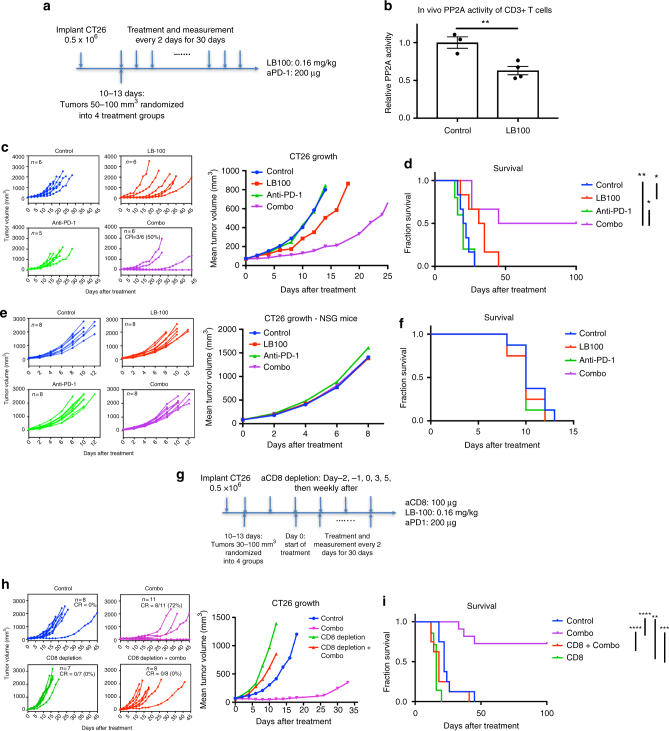Fig. 1.
PP2A inhibition and PD-1 blockade synergistically elicit tumor rejection in a CD8+ T cell-dependent manner. a BALB/c mice were inoculated with 0.5 × 106 CT26 cells subcutaneously in the right thoracic flank. When tumors reached between 50 and 100 mm3, mice were then randomized to four treatment groups and treated every 2 days until reaching survival end point. b BALB/c mice were treated with PBS or LB-100, 0.16 mg kg−1, every other day. 4 h after the third injection, CD3+ T cells were isolated from the spleen. PP2A activity was measured relative to control (n = 3 for control and n = 4 for LB-100 group). Error bars depict SEM. c Tumor growth curves: control (blue), LB-100 (red), aPD-1 (green), and combination (purple). Individual and mean tumor volume over time. d Cumulative survival of mice over time. e, f Effect of LB-100 is dependent on adaptive immunity. Immunodeficient NSG mice without T, B, and NK cells were similarly inoculated with CT26 cells and randomized into four treatment groups as in a. e Tumor growth curves with individual and mean tumor volume over time. f Cumulative survival of mice over time. g–i Synergy of LB-100 with PD-1 blockade is dependent on CD8+ T cells. BALB/c mice were inoculated similarly as above. g When tumors reached 30–100 mm3, mice were temporarily depleted of CD8+ T cells and treated with combination. h Tumor growth curves: control (blue), combination (purple), CD8 depletion only (green), and combination with CD8 depletion (red). Individual and mean tumor volume over time. i Cumulative survival of mice over time. Data are representative of two independent experiments. *P < 0.05, **P < 0.01, and ****P < 0.0001 (log-rank test)

